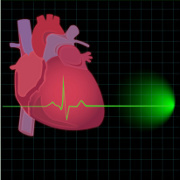Heart failure is a serious health condition which affects almost 6 million Americans each year. While it’s more common in adults than children, heart failure can affect persons of all ages.
The name of the condition -- heart failure -- may be somewhat misleading since the heart doesn’t actually stop beating as with sudden cardiac arrest. Instead, the heart simply fails to adequately do to its job pumping the blood necessary to maintain the body.
When heart failure occurs, the heart may be unable to fill up with adequate supplies of blood. In some instances, the heart may be unable to pump hard enough to deliver blood to the rest of the body.
People with heart failure may experience one or both of these conditions. Heart failure may also occur in either the right-side or the left-side of the heart.
Heart failure is a serious medical condition that may cause shortness of breath, fatigue, or swelling in lower extremities such as the legs, feet, or ankles, neck veins, liver, and abdomen. While many different conditions can contribute to heart failure, the most common causes are diabetes, hypertension or high blood pressure, and coronary heart disease.
There is no cure for heart failure. Because heart failure can permanently damage the heart muscle, it’s important to treat it as soon as possible and minimize the damage.
Heart failure is generally treated by first treating the underlying cause. In addition, heart failure-related symptoms are also treated with a goal of improving overall quality of life and increasing longevity.
Treatment options include lifestyle changes such as dietary changes, managing fluid intake, limiting alcohol, and managing risk factors for related conditions such as diabetes, high blood pressure, and heart disease.
Medications such as diuretics, also known as water pills, beta blockers, angiotensin receptor blockers, or aldosterone antagonists may also be prescribed. More severe cases may require a mechanical heart pump.
A heart transplant may be performed for end-stage heart failure.
Since there is no cure for heart failure, researchers are constantly looking for ways to improve the quality of life and increase longevity for persons with heart failure. Researchers at the University of UCLA recently identified a combination of therapies that improved the two-year survival rate by 90 percent.
This was the first study to examine how introduction of different recommended heart failure therapies worked together to improve the overall outcome for heart failure patients.
Led by Dr. Gregg Fonarow, researchers examined medical records from 4,128 heart failure patients. Patient records were obtained from the Registry to Improve the Use of Evidence-Based Heart Failure Therapies in the Outpatient Setting or IMPROVE HF database.
IMPROVE HF database records are obtained from 167 participating cardiology clinics in the United States. Of the patient records, 1,376 patients died at 24 months while the remaining 2,752 survived at 24 months. For purposes of this study, researchers focused on patients with left ventricle heart failure because it’s a symptom of chronic heart failure.
Researchers evaluated seven recommended therapies:
• "Three types of heart failure medications: beta blockers, aldosterone antagonists, and angiotensin-converting enzyme inhibitors or angiotensin receptor blockers
• Cardiac resynchronization therapy, which helps coordinate heart contractions
• Anti-coagulant therapy for atrial fibrillation, to prevent clot formation in patients with an irregular heartbeat
• Implantable cardioverter-defibrillator devices, to deliver electrical shocks if potentially fatal heart-rhythm abnormalities occur
• Heart-failure patient education." (University of California 1)
Researchers found that 24-month survivability improved dramatically as each recommended therapy was introduced, compared to patients who received no treatments at all. Overall survivability improved by as much as 90 percent when all therapies were added. The average improvement observed was 83 percent.
Survivability improved even when fewer therapies were prescribed. Patients who received beta blockers only demonstrated a 39 percent survivability improvement.
Researchers also observed that two therapies appeared to provide the greatest benefit in terms of improving survivability: beta blockers at 42 percent, and cardiac resynchronization therapy at 44 percent.
While adding multiple therapies to the treatment plan will not cure heart failure, study findings indicate that using multiple therapies can improve longevity and may contribute to an improved quality of life.
People with heart failure should discuss the various therapies available with their physician and whether or not multiple therapies are the right course of action for them.
SOURCES:
What is Heart Failure? National Heart Lung and Blood Institute. 09 Feb 2012. http://www.nhlbi.nih.gov/health/health-topics/topics/hf
University of California - Los Angeles (2012, February 22). Combined use of recommended heart failure therapies significantly boosts survival odds, study suggests. ScienceDaily. Retrieved February 29, 2012, from http://www.sciencedaily.com/releases/2012/02/120222094246.htm
How is Heart Failure Treated? National Heart Lung and Blood Institute. 09 Feb 2012. http://www.nhlbi.nih.gov/health/health-topics/topics/hf/treatment.html
Reviewed March 1, 2012
by Michele Blacksberg RN
Edited by Jody Smith






Add a CommentComments
There are no comments yet. Be the first one and get the conversation started!